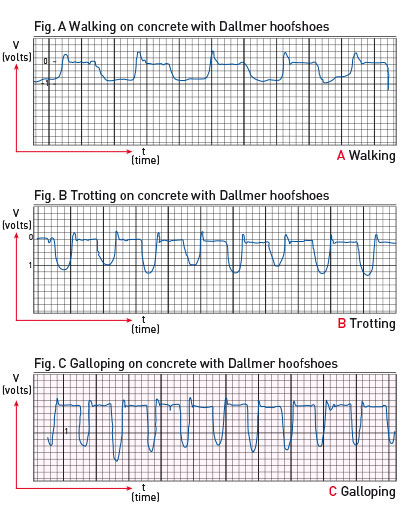

Definition: The elastic change in formation of the horny box as a result of applying and relieving the load on the foot.
An unshod hoof on firm, even, hard ground causes the arch of the sole to flatten, and the hoof widens across the heels. At the same time, the frog is exposed to couterpressure from the ground and fulfills mainly impact-absorbant and holding functions. The major role of the unhindered hoof mechanism is played by the suspension of the distal phalanx over the laminar corium on the inside of the hornyx box: The horse’s propulsion results in tension on the suspensory apparatus and a deformation of the horny box. When the hoof is relieved, the horny box returns to ist original shape. At the same time, the hoof mechanism stimulates the blood circulation which improves the horn production.
When the horse propels (absorption of weight by the limbs), various mechanisms are in action balance the load and to absorb the impact:
Together with Prof. Preuschoft (Ruhr-Universität Bochum) and Prof. Werner (FU Osnabrück), Helmuth Dallmer has measured the expansion of the heels in various paces and on different kinds of surfaces to examine the effect of the glued-on DALLMER Hoofshoe on the hoof mechanism.
Result: Contrary to conventional shoeing, the elastic plastic hoofshoes do not impair the natural deformation of the hoof, and heels are near-completely spared from the loss of horn from wear.

| Fig. A | Fig. B | Fig. C | |
| Concrete: | 0,7 mm, n = 118 | 1,14 mm, n = 94 | 1,4 mm, n = 63 |
| Grass: | 0,5 mm, n = 35 | 0,75 mm, n = 76 | 0,91 mm, n = 38 |
| Sand: | 0,4 mm, n = 52 | 0,55 mm, n = 65 | 0,5 mm, n = 90 |